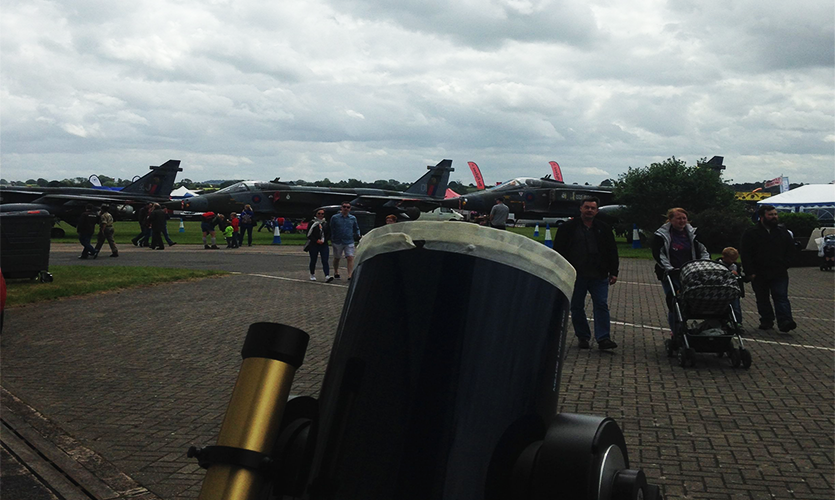Tales from the Liverpool Telescope
The Liverpool Telescope (LT) (opens in a new tab), owned and operated by Liverpool John Moores University (LJMU), formed part of the National Schools' Observatory (NSO) (opens in a new tab) exhibition at this year's Royal Air Force (RAF) Cosford Air Show (opens in a new tab), helping to lead an educational exhibition on astronomy and spaceflight.
The LT section was attended by scientists from the LJMU Astrophysics Research Institute (ARI), on hand to answer questions about the facility and its proposed 4-metre successor "LT2". This included how the Liverpool Telescope helped to find seven Earth-sized worlds earlier this year.
It also featured life-size mock-ups of the LT and LT2 primary mirrors, to highlight just how enormous these pieces of precision infrastructure are.
The NSO exhibit in the ‘Space Hangar’ was aimed at children and adults alike, featuring hands-on activities and movies such as virtual reality experiences of the International Space Station, the Liverpool Telescope and falling into a black hole, giant galaxy simulation videos, assembling the ‘moonsaic’ jigsaw puzzle and searching for all of the planets in our Solar System treasure hunt.
The event is the RAF's only official air show, and regularly draws a crowd of 50,000 or more. Several hangars were open to the public, hosting exhibitors from around the country.
Dr Helen Jermak, an Instrument Scientist at the Astrophysics Research Institute explains,
“The Liverpool Telescope is one of the largest and most advanced fully robotic telescopes in the world, especially dedicated to the study of the rapidly changing Universe. The LJMU Astrophysics Research Institute is currently in the process of designing the Liverpool Telescope 2, a facility which will take the Liverpool Telescope’s crown as the world’s largest robotic telescope dedicated to transient science, and which will be a powerful tool in the search for Earth-like planets, gravitational wave sources and explosive objects over the coming decades.”
Note: these are general observations taken by the LT and not footage of the research announced in this release. Credits: ©2016 Daniel López / IAC.
The Liverpool Telescope is mainly used for professional astronomical research, although part of its observational time is devoted to educational projects. In Spain, these are run by the Educational Project with Robotic Telescopes (PETeR) (opens in a new tab) of the IAC, while in the UK, they're run by the National Schools’ Observatory (opens in a new tab) (NSO) at LJMU.




